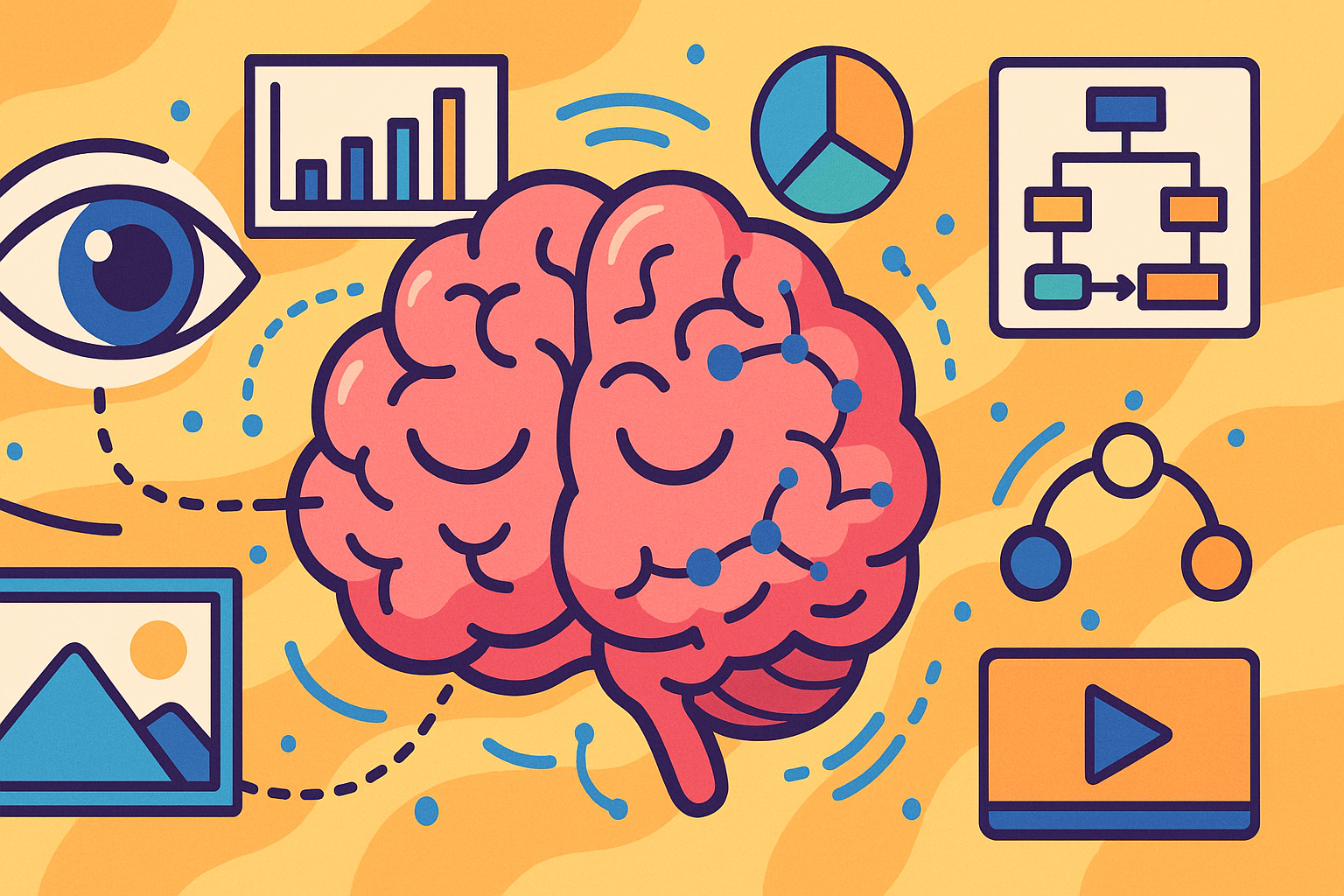Explore the fascinating cognitive science that underpins effective visual learning. Discover how principles of perception, memory, and attention converge to make visual methods a powerful pathway to acquiring and retaining knowledge efficiently.
Unlocking Knowledge: The Psychology Behind Visual Learning.
The human brain processes visual information with remarkable speed and efficiency. From early development, sight shapes how we perceive, understand, and recall experiences. Images, diagrams, and graphical representations are fundamental to our cognition, influencing how we build knowledge. Our brains are inherently wired for visual input.
In today's information-rich environment, absorbing and retaining knowledge effectively is paramount. Traditional text-heavy methods often struggle to capture attention and facilitate deep understanding amidst digital distractions. This highlights the growing importance of approaches that align with our natural cognitive strengths, especially where clarity is crucial.
Visual learning is more than just looking at pictures; it's a strategic approach. It involves designing infographics, charts, flowcharts, videos, and simulations. The aim is to transform abstract ideas and intricate data into digestible, memorable visual narratives, resonating more profoundly than words alone.
Research consistently shows that visually presented information is remembered more accurately and for longer periods. This is because visual stimuli engage multiple brain areas, creating stronger neural pathways. When we see something, our brains actively make sense of patterns and relationships, deepening comprehension. This phenomenon is a cornerstone of effective learning strategies.
For organizations like Interbytewen, applying visual learning principles is a strategic necessity. Whether for internal training, client presentations, or communicating service offerings, visuals enhance engagement. They ensure key messages are not just received but truly assimilated, leading to clearer, more impactful communication. This approach unlocks new potentials for knowledge acquisition and dissemination.
Applications and Considerations
- Education and Skill Development: Visual aids simplify complex topics, boosting comprehension for learners. They accelerate understanding and aid recall. Careful design is crucial.
- Data Interpretation: Charts and infographics turn raw data into clear insights. They enable rapid trend identification, aiding decisions. Poorly designed visuals can mislead.
- Effective Communication: Visuals enhance messaging and convey complex service information concisely. They create stronger connections and improve retention. Accuracy is key.
Exploring Cognitive Mechanisms
At the core of visual learning’s efficacy is the "Picture Superiority Effect." Concepts learned visually are more readily recalled than those learned through words. Our brains process images in parallel, taking in the whole at once, while text is sequential. This parallel processing reduces cognitive load, making acquisition intuitive and more efficient.
Dual-coding theory, by Allan Paivio, further supports this. It suggests information is stored in two distinct codes: verbal and non-verbal (visual). When both are activated simultaneously – seeing an image and reading its description – the memory trace strengthens significantly, leading to superior recall and understanding of complex ideas.
While benefits are clear, visual learning isn't universally uniform. Individual preferences vary; some learn better auditorily or kinesthetically. Moreover, the quality and relevance of visual content are paramount. Cluttered or irrelevant visuals hinder comprehension, potentially adding to cognitive overload instead of reducing it. Thoughtful design is key.
The evolution of visual learning highlights interactivity. Dynamic and immersive visuals, like simulations or AR/VR experiences, allow learners to manipulate variables and explore concepts actively. This hands-on engagement fosters deeper understanding and problem-solving. Such innovations hold immense potential for organizations like Interbytewen to enhance learning pathways.
Final Thoughts and Recommendations
The psychological evidence strongly supports visual engagement's impact on learning and memory. Aligning communication with the brain's natural visual preference significantly enhances information absorption and retention. This fosters genuine understanding and insight, moving beyond simple fact presentation.
For any entity conveying complex ideas or training personnel, thoughtfully designed visual elements offer a strategic advantage. They ensure content resonates deeply, improving comprehension and knowledge transfer. Prioritizing visual clarity and engagement is a clear pathway to superior learning outcomes.
Read Comments
Amar Faeez
Thank you for your kind words! We're delighted to hear the article resonated with you. It truly underscores the power of thoughtful visual design in enhancing comprehension and retention. Your experience perfectly illustrates the principles discussed.
Rahim Karim
Interesting points about the Picture Superiority Effect and dual-coding theory. I'm curious, what are some of the biggest challenges companies face when trying to implement more visual learning strategies effectively?
Zarifah Talib
That's an excellent question. A significant challenge often lies in resource allocation for quality visual design and ensuring content accuracy. It also involves training teams to think visually, rather than just textually, and adapting to diverse learning styles. Overcoming these requires a strategic approach.
 Interbytewen
Interbytewen
Ummi Helmi
This article beautifully articulates the science behind visual learning. It's so true that a well-designed infographic can convey more than pages of text. I often find myself remembering concepts much better when they're presented visually. A truly insightful piece!